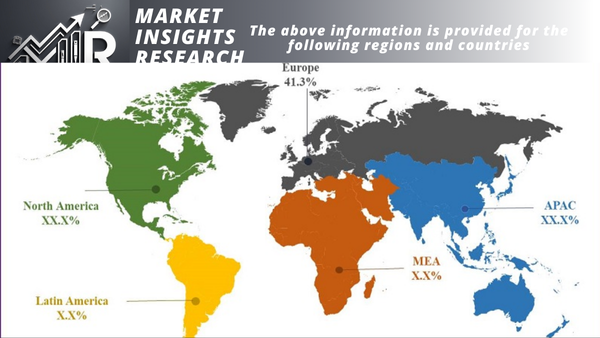Police Robot Market size
Global Police Robots Market Research Report 2025- 2035
Published Date: May - 2025 | Publisher: Market Insights Research | No of Pages: 444 | Industry: ICT | Format: Report available in PDF / Excel Format
View Details Buy Now 3500 Download Free Sample Ask for Discount Request CustomizationMarket Size and Expansion
Law enforcement and security Robots MarketEstimated to be worth USD 9.42 billion in 2024, this market is expected to rise at a compound annual growth rate (CAGR) of 14.1% from 2026 to 2033, reaching USD 29.12 billion. The market for security robots is expected to reach USD 16.54 billion in 2023 and expand at a compound annual growth rate (CAGR) of 14.9% between 2024 and 2030. The patrol robot market is expected to grow at a compound annual growth rate (CAGR) of 14.2% from its estimated USD 2.5 billion in 2023 to USD 8.5 billion by 2032.

Important Market Factors
Technological AdvancementsPolice robots can now do tasks like facial recognition, autonomous navigation, and real-time data analysis thanks to the combination of artificial intelligence (AI), machine learning, and sophisticated sensors.
Growing Security ConcernsThe need for robotic aid in law enforcement is being driven by an increase in terrorist attacks, criminal threats, and security breaches worldwide.
Research on Straits
Operational EfficiencyBecause robots can work in dangerous conditions, human cops are less at risk, and they can react faster in emergency situations.
news
Regional Insights North AmericaDue to significant investments in security and defense technologies, it leads in adoption.
Due to growing security concerns and technology breakthroughs in nations like China and India, the Asia-Pacific region is predicted to experience tremendous growth.
Global Police Robot Market Overview
Market Snapshot
-
2024 Market Value ~$9.42 billion
-
Forecast (2033) ~$29.12 billion
-
CAGR ~14.1% (2026–2033)
1. Market Segmentation
Types of Police Robots
-
Surveillance Robots
Autonomous patrol bots for public safety monitoring. -
Explosive Ordnance Disposal (EOD) Robots
Used to disarm bombs and manage dangerous items remotely. -
Unmanned Ground Vehicles (UGVs)
For reconnaissance, search-and-rescue, and remote combat scenarios. -
Drone Surveillance (UAVs)
Deployed for aerial surveillance, crowd control, and traffic monitoring. -
Humanoid Robots
Used for interaction, interrogation, or crowd engagement.
Applications
-
Crime scene inspection
-
Explosive detection and neutralization
-
Hostage rescue
-
Surveillance and crowd monitoring
-
Search and rescue operations
-
Riot control
-
Facial recognition & license plate scanning

2. Key Market Players
-
Boston Dynamics (US)
-
FLIR Systems Inc. (US)
-
Endeavor Robotics (US)
-
Knightscope Inc. (US)
-
ReconRobotics Inc. (US)
-
Robot Security Systems (Netherlands)
-
Telerob GmbH (Germany)
Safety Market Drivers for Robots
Growing Need for Security Autonomous Solutions
The growing need for autonomous solutions in security operations has led to a notable expansion in the security robots market. Advanced technologies like robotics and artificial intelligence are being adopted by businesses and organizations more frequently in an effort to boost operational efficiency and strengthen security measures. Conventional security techniques, which frequently depend on human labor, might not be adequate to handle changing risks and weaknesses. Security measures gain a new degree of attentiveness and dependability with the incorporation of security robots. With little assistance from humans, these robots can conduct surveillance, keep an eye on trouble spots, and react to emergencies. They analyze real-time data using complex algorithms, which facilitates quick and easy decision-making. Notably, security robots' scalability enables their use in a variety of settings, such as public areas, homes, and businesses. The need for these autonomous solutions is anticipated to rise as the security robots market develops further, reflecting the increased focus on risk mitigation and improved security. Additionally, the development of robotics technology allows for the ongoing enhancement of security robots, which can result in increased efficacy and efficiency in threat detection and response, boosting consumer and corporate confidence.
Growing Rates of Crime and Security Issues
Growing security concerns among people and organizations, as well as rising crime rates, have a significant impact on the security robots market. The incidence of security threats rises in tandem with the growth of metropolitan areas and populations. The need for strong security measures has become more apparent as a result, and technologically sophisticated solutions like security robots have been used. Security robots are a powerful deterrent against possible threats because of their capacity for real-time surveillance and quick response. In addition to reducing the workload for human security guards, they guarantee dependable and consistent protection in high-risk locations by automating surveillance operations. Security robots can significantly improve the security infrastructure in a number of locations, such as parking lots, corporate buildings, and shopping malls.
Technological Developments in AI and Robotics
The market for security robots has grown as a result of technological developments in robotics and artificial intelligence (AI). Highly advanced and competent security robots have been made possible by the quick development of cutting-edge technologies. These robots include capabilities including environmental awareness, obstacle detection, and facial recognition. The capabilities of these robots increase with the advancement of technology, improving security operations performance. Integrating AI into security robots increases their efficacy in preventing and responding to security problems by enabling them to learn from their environment and adjust to novel circumstances. In addition to encouraging the use of security robots in a variety of businesses, this technical advancement boosts consumer confidence in automated solutions for their protection and safety.
3. Strategic Market Analyses
âś… SWOT Analysis
| Strengths | Weaknesses |
|---|---|
| Advanced AI & sensor tech | High initial investment |
| Human risk reduction | Limited real-time decision-making |
| 24/7 operational ability | Public perception and ethical concerns |
| Opportunities | Threats |
|---|---|
| Smart city integrations | Cybersecurity vulnerabilities |
| Increasing defense budgets | Regulatory hurdles |

Porter’s Five Forces
| Force | Analysis |
|---|---|
| Threat of New Entrants | Moderate – requires tech, capital, & government clearance |
| Bargaining Power of Suppliers | Low to Moderate – hardware parts are standardized |
| Bargaining Power of Buyers | High – mostly large institutional buyers (e.g., governments) |
| Threat of Substitutes | Moderate – human force still dominant |
| Industry Rivalry | High – innovation-driven competition among tech firms |
PESTLE Analysis
| Factor | Impact |
|---|---|
| Political | Gov. support for public safety tech; export restrictions |
| Economic | Defense budgets, cost of tech components |
| Social | Public acceptance, ethical AI concerns |
| Technological | AI, IoT, facial recognition, drone integration |
| Legal | Privacy laws, robotics usage regulations |
| Environmental | Energy-efficient robots; e-waste considerations |
Market End-Use Insights for Security Robots
The market for security robots is expanding significantly across all of its end-use segments, which is indicative of rising demand for automated security solutions. One significant contributor is the military, which improves operational efficiency by using sophisticated robotics for surveillance, threat detection, and reconnaissance. A significant part is being played by the commercial sector, as companies are using security robots for patrolling and monitoring properties while taking cost-effectiveness and safety improvements into account. Homeowners are using security robots for residential applications, which are growing in popularity as a way to maintain safety and discourage criminal activity. Furthermore, security robots in public areas are becoming more and more popular since they help law enforcement, prevent crime, and provide automated surveillance in crowded areas. Technology breakthroughs and a growing emphasis on safety in various contexts are expected to drive the security robots market's substantial growth as more industries realize the distinct advantages that these machines provide. The growing complexity of security threats and changing security requirements both contribute to market expansion.
Market Technology Insights for Security Robots
One crucial sector of the security robots market that is expected to grow significantly is technology. The future of security robots is being shaped by technological advancements in fields including artificial intelligence, machine learning, computer vision, and sensor technology. These developments in technology not only make security robots more functional, but they also increase their effectiveness in monitoring and identifying threats. For example, robots can learn from their surroundings, adjust to changing circumstances, and quickly analyze large volumes of data thanks to artificial intelligence and machine learning, all of which are essential in security applications. Computer vision, on the other hand, enables robots to decipher visual data, facilitating situational awareness and real-time decision-making. Sensor technology is essential because it can identify irregularities and intrusions, keeping security robots vigilant and responsive. All of these elements work together to support the market's strong development trajectory. Since they are being incorporated into more and more applications, the continuous developments in these technological areas are crucial for the Security Robots Market statistics, resulting in large investments and industry breakthroughs.
Regional Market Insights for Security Robots
With a market worth of 1.484 USD billion, North America led the industry and is positioned as a significant contributor due to its high demand driven by the adoption of new technologies and security concerns. With a valuation of 1.236 USD billion, Europe came in second, with growing investments in smart city projects contributing to the market's growth. Rapid urbanization and better security infrastructures have contributed to APAC's 0.989 USD billion valuation, indicating its increasing importance. With a market value of 0.659 USD billion, South America was distinguished by increased need for automation and new security requirements. Last but not least, the MEA region, which is worth 0.321 USD billion, offered special growth prospects as governments support both technical advancements and public safety. All things considered, these numbers showed a varied geographical environment within the Security Robots Market segmentation, along with a range of growth factors and changing consumer needs.
Related Reports
- QR Codes Payment Market Size - By Offerings (Solution [Static QR Code {Merchant-presented QR Code, Customer-presented QR...
- Digital Banking Market Size - By Banking (Retail, Corporate, Investment), Service (Transactional, Non-Transactional), Mo...
- Sustainable Finance Market Size - By Investment Type (Equity, Fixed Income, Mixed Allocation), By Transaction Type (Gree...
- mPOS Terminal Market Size - By Component (Hardware, Software, Service), By Product (Handheld Terminal, Tablet) By Applic...
- AI Avatars Market Size - By Avatar (Interactive Digital Human Avatar and Non-Interactive Digital Human Avatar), By Deplo...
- Corporate Flows B2B Payment Market Size - By Payment (Cross-border Payments, Domestic Payments), By Enterprise Size (SME...
Table of Content
Table of Contents
-
Executive Summary
-
Introduction
2.1 Market Definition and Scope
2.2 Research Methodology
2.3 Report Assumptions and Limitations -
Market Overview
3.1 Market Dynamics
3.2 Drivers and Restraints
3.3 Opportunities and Challenges -
Market Segmentation
4.1 By Type
- Surveillance Robots
- Explosive Ordnance Disposal (EOD) Robots
- Unmanned Ground Vehicles (UGVs)
- Drone Surveillance (UAVs)
- Humanoid Robots
4.2 By Application
- Crime Scene Inspection
- Surveillance and Reconnaissance
- Riot Control
- Search and Rescue
- Others
4.3 By Geography -
Regional Market Analysis
5.1 North America
5.2 Europe
5.3 Asia-Pacific
5.4 Latin America
5.5 Middle East & Africa -
Competitive Landscape
6.1 Key Players Profiles
6.2 Market Share Analysis
6.3 Recent Developments -
Market Analysis Tools
7.1 SWOT Analysis
7.2 Porter’s Five Forces
7.3 PESTLE Analysis -
Market Forecast and Future Outlook
-
Sustainability and Ethical Considerations
-
Conclusion and Recommendations
-
References
List of Tables
-
Table 1: Global Police Robot Market Size (2023–2033)
-
Table 2: Market Segmentation by Robot Type
-
Table 3: Market Segmentation by Application
-
Table 4: Regional Market Size and Forecast
-
Table 5: Key Players and Their Market Share
-
Table 6: SWOT Analysis Summary
-
Table 7: Porter’s Five Forces Analysis
-
Table 8: PESTLE Analysis Summary
-
Table 9: Recent Mergers and Acquisitions in Police Robotics
List of Figures
-
Figure 1: Police Robot Market Growth Trend (2023–2033)
-
Figure 2: Market Share by Robot Type (2024)
-
Figure 3: Application-Wise Market Distribution
-
Figure 4: Geographic Market Segmentation
-
Figure 5: Competitive Landscape Overview
-
Figure 6: SWOT Analysis Diagram
-
Figure 7: Porter’s Five Forces Model
-
Figure 8: PESTLE Analysis Framework
-
Figure 9: Technology Adoption in Police Robots
-
Figure 10: Forecasted CAGR by Region
FAQ'S
For a single, multi and corporate client license, the report will be available in PDF format. Sample report would be given you in excel format. For more questions please contact:
Within 24 to 48 hrs.
You can contact Sales team (sales@marketinsightsresearch.com) and they will direct you on email
You can order a report by selecting payment methods, which is bank wire or online payment through any Debit/Credit card, Razor pay or PayPal.
Discounts are available.
Hard Copy
